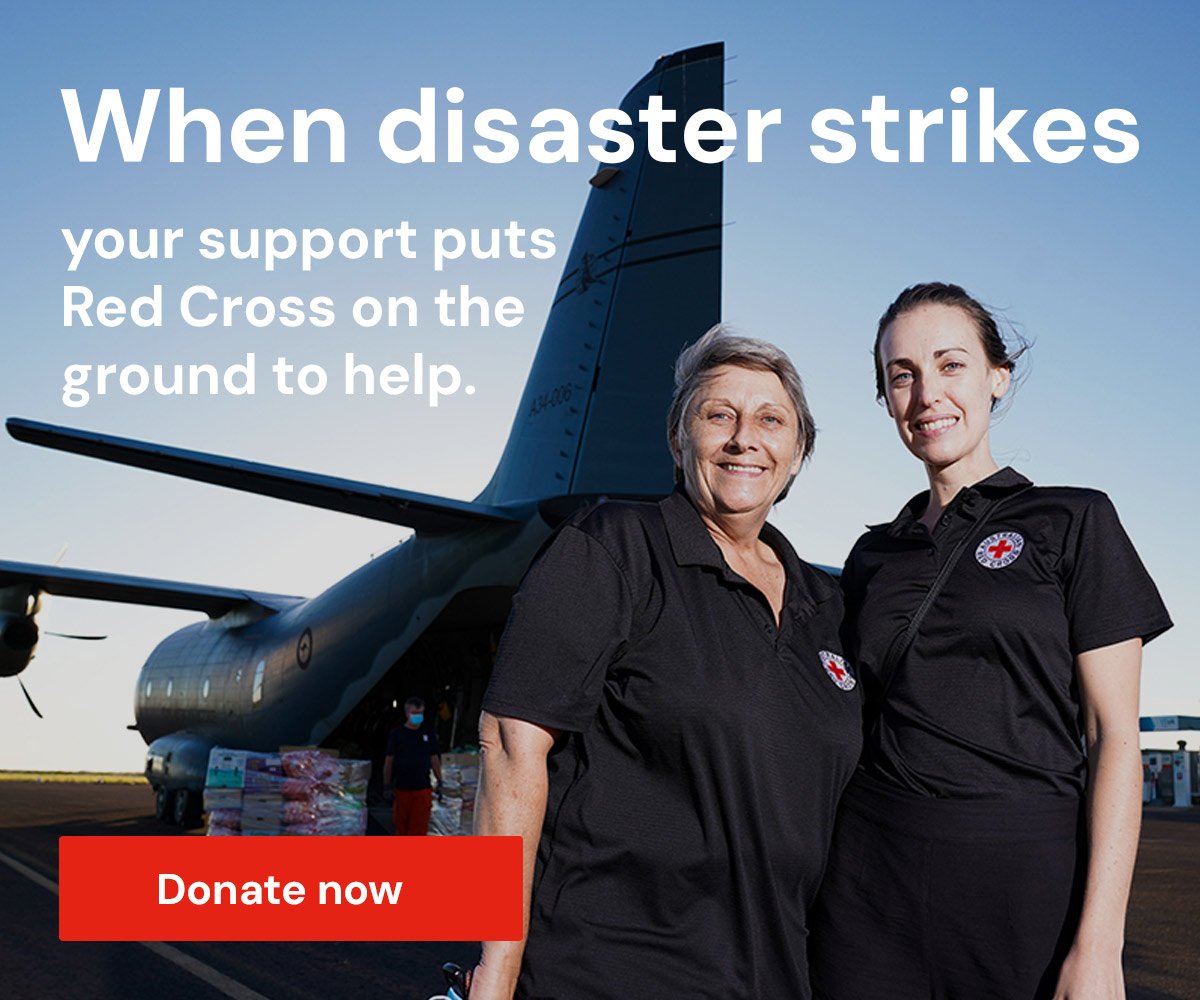What we do
What we do
Australian Red Cross is a volunteer-based organisation that exists to reduce human suffering.
With 110 years’ experience and a community of 20,000+ members and volunteers, we act locally and connect globally to deliver what’s needed, when it’s needed most.
Emergency services and disasters
Help build communities that are strong, resilient and able to anticipate, respond, and recover well from disasters and climate change related emergencies.
Migration
Help build fair, welcoming, and inclusive communities where migrants are safe and have their humanitarian needs met.
Community activities and programs
Build connection and resilience through volunteering and responding to the humanitarian needs of local communities.
International programs
Help build stronger, more resilient international communities with increased capacity to prepare for, anticipate, respond to and recover from crises, especially those caused by climate change.
International Humanitarian Law
Better humanitarian outcomes for people and communities impacted by armed conflicts.
First Nations Centrality
Our work is informed by the voices of First Nations people, so that we may work together in the purpose of Australian Red Cross, while fostering cultural safety, equity and greater inclusion of First Nations people in our programs, volunteering and as voices of advocacy.
Lifeblood
Increase the supply of safe and high-quality blood, plasma and other biological products, bolstering the capacity to respond to emergencies, support medical treatments, and improve patient and community outcomes.
Charity donations of $2 or more to Australian Red Cross may be tax deductible in Australia. Site protected by Google Invisible reCAPTCHA. © Australian Red Cross 2024. ABN 50 169 561 394

